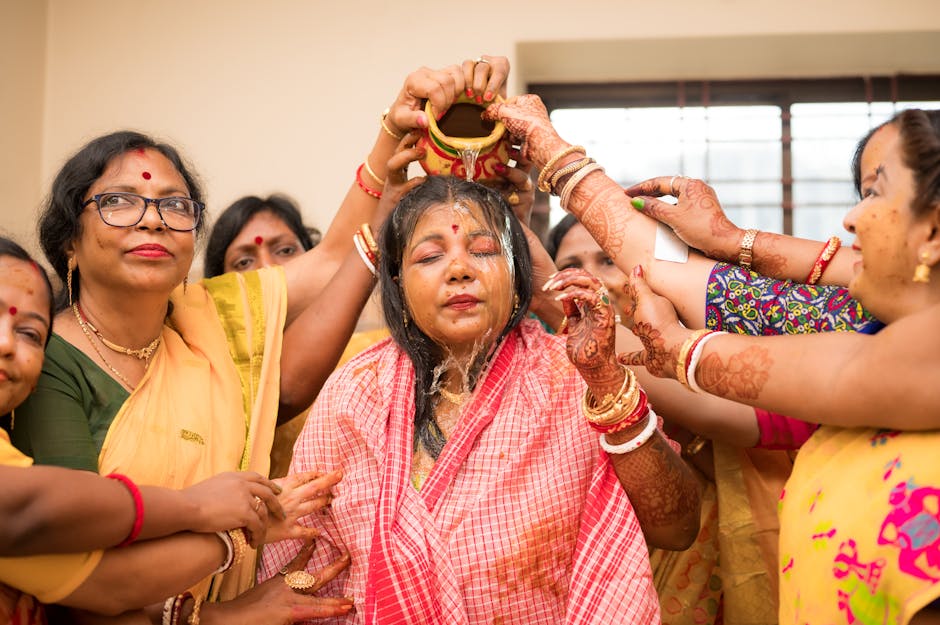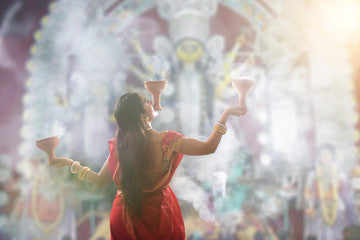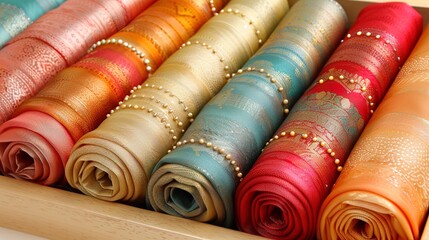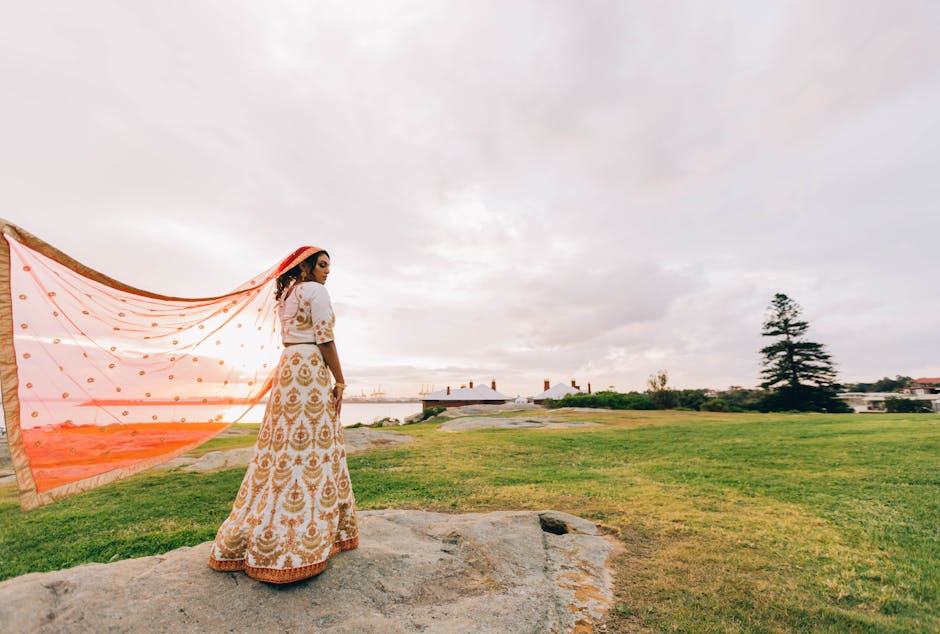The Art of Draping: Mastering the Elegance of Traditional Sarees
Introduction to Traditional Sarees and Draping Styles
Sarees, a symbol of grace and tradition, hold a special place in the heart of fashion. Originating from the Indian subcontinent, this versatile garment is more than just cloth; it’s a canvas that reflects the rich culture and intricate beauty of its origins. When it comes to sarees, the magic lies in the draping. Each style tells a story, representing different regions and their unique customs. The Nivi style, for example, wraps around the waist, with pleats tucked in the front, and the pallu draped over the shoulder, showcasing elegance in simplicity. Then, there’s the Bengali drape, characterized by its two wide pleats and a key ring used to hold the pallu in place, offering a glimpse into Bengal’s artistic heritage. Another fascinating style is the Gujarati way, where the pallu comes from the back over the right shoulder and is spread across the front, highlighting the intricate work on the pallu. Each draping method transforms the saree, giving it a new personality and grace, making it suitable for various occasions, from everyday wear to grand weddings and festivities. Embracing the art of saree draping enables one to celebrate the timeless beauty and endless creativity of traditional attire.
The History Behind the Elegance of Traditional Sarees
Sarees have been a symbol of grace and culture in Indian tradition for thousands of years. Originally, sarees were simply a piece of cloth, ranging from 5 to 9 yards in length, draped elegantly around the body. The precise origin of sarees is a bit of a mystery, but they are mentioned in ancient Hindu texts, indicating they have been an essential part of Indian culture for centuries. Traditionally, the material and style of the saree would vary significantly from region to region, reflecting the local culture, climate, and fashion. For instance, silk sarees from the South, cotton ones from the West, and intricate weaves from the East each tell a story of their own. With time, the saree has evolved but has always retained its status as a timeless piece of clothing. Women across the country, regardless of their social status, would wear a saree, making it a unifying symbol of femininity and grace. Today, while modern fashion continues to evolve, the saree remains a cherished garment, admired for its elegance and cultural significance.
Types of Traditional Sarees Across Different Cultures
Traditional sarees are a symbol of elegance and culture across India, each region offering its unique version. Let’s dive into the diversity. First up, Banarasi sarees from Varanasi are known for their gold and silver brocade or zari, and fine silk. They scream celebration and are a must for weddings. Moving south, Kanjeevaram sarees hail from Tamil Nadu. They stand out with their vibrant colors and high-quality silk, making them another favorite for festive occasions. In the west, Bandhani sarees from Gujarat and Rajasthan show off tie-dye patterns, each dot telling a story of tradition. Eastern India offers Baluchari sarees, originating from West Bengal, famous for their mythological scenes woven into the fabric. Not to forget, Sambalpuri sarees from Odisha known for their traditional handloom weaving techniques. Each type of saree not only showcases the artistic heritage of its region but also celebrates the diversity and richness of Indian culture. Embracing any of these sarees means wrapping yourself in centuries of tradition and pride.
Essential Accessories for Saree Draping
To nail the look of a saree, you need more than just the saree itself. The right accessories make all the difference. First, safety pins are crucial. They keep your saree pleats in place, ensuring nothing comes loose at the wrong moment. Then, there’s the waist chain or belt. Not only does it add a touch of elegance, but it also helps define your waist, giving the saree a more structured look. Don’t forget the blouse and petticoat, which are the foundation of your saree. They need to match not just in color but in spirit with your saree for that seamless elegance. Lastly, jewelry – from earrings to necklaces, choose pieces that compliment the style and color of your saree. Together, these accessories help you achieve that perfect saree drape with grace and style.
Step by Step Guide to Draping Sarees
Draping a saree is simpler than it looks. Let’s break it down. First, you need a saree, a blouse, and a petticoat. Wear the blouse and petticoat, tie the petticoat tightly at the waist. Here’s how to drape your saree:
- Start with the end: Hold the non-pallu end of the saree. Tuck it inside the petticoat at your waist, on your right side. Wrap it once around your waist, returning to your starting point.
- Make the pleats: Now, make about 5-7 pleats, each about 5 inches wide. Hold them together so they fall straight and even. Tuck these pleats into your petticoat, slightly to the left of the navel. Ensure they open towards your left.
- Drape over shoulder: Take the pallu, the decorated end, and drape it over your left shoulder. The pallu should fall behind you, ideally, till your knee level or lower.
- Adjust the pleats: Adjust the front pleats spread across your waist, making them neat and aligned.
- Secure the pallu: If you want the pallu to stay in place, pin it to your blouse’s shoulder. You can also pin the pleats at your waist to avoid them coming loose.
Wear your saree with confidence. Practice a few times, and you’ll drape it effortlessly. Remember, the elegance of a saree comes from how comfortable and confident you feel wearing it.
Tips to Master the Art of Saree Draping
Mastering the art of saree draping doesn’t happen overnight. It’s all about patience and practice. But fear not, a few simple tips can set you on the right path to looking graceful and elegant. First off, choose the right fabric. Lightweight sarees like chiffon or georgette are easier to handle and stay in place better. Now, getting the pleats right is crucial; they can make or break your look. Start with about five to seven pleats, each about five inches wide. Neatly tuck them into your petticoat at the waist, ensuring they’re even and aligned with your left leg. The pallu, or the draped end over your shoulder, also needs attention. Decide whether you want it long or short, but make sure it’s neatly pleated or ironed for that sleek appearance. Don’t forget the blouse and petticoat; they should match and fit well to complement the saree. Lastly, practice walking in your saree. Balance is key, so take strides you’re comfortable with to avoid tripping over. With these pointers, you’ll be draping sarees like a pro in no time.
Common Mistakes to Avoid While Draping Sarees
When draping sarees, many dive in without a plan. Here’s straight talk - avoid these mistakes to ensure you look nothing short of fabulous. First, wearing the wrong underwear can ruin the saree’s look. Opt for seamless and well-fitted ones. Second, ignoring the pleats is a big no. Messy or uneven pleats can make the saree look sloppy. Take your time to arrange them neatly. Third, the length of the saree matters. Too short and it looks awkward, too long and you might trip. The saree should just touch the floor. Fourth, choosing the wrong footwear before draping ends in length issues. Decide on your shoes first. Lastly, many forget the pallu, either letting it hang lifelessly or fixing it too tight. Let it flow naturally. Sidestep these, and you’ll wear your saree like a pro.
How to Choose the Right Fabric and Color for Your Saree
When you’re on the hunt for the perfect saree, keep two things top of mind: fabric and color. These elements are key to nailing the look you’re aiming for, whether it’s elegance, comfort, or a bit of both.
Fabric first. Your choice of fabric can transform your look entirely. Cotton sarees are great for daily wear thanks to their comfort and breathability, but if you’re attending a more formal event, silk is your go-to for an elegant vibe. For a lighter, flowy feel, chiffon and georgette sarees do the trick, making them ideal for summer events or parties.
Color counts. The color of your saree can set the mood. Bright colors like red, yellow, and royal blue are perfect for festive occasions, radiating joy and energy. For a more subdued, sophisticated look, opt for pastel shades or classic white. Remember, your saree color should complement your skin tone. Lighter colors can brighten paler complexions, whereas vibrant, deep colors beautifully accentuate darker skin tones.
In short, picking the right fabric and color depends on the occasion, your personal comfort, and skin tone. Stick to these guidelines, and you’ll find a saree that not only looks breathtaking but also feels fantastic to wear.
Occasions to Flaunt Your Traditional Saree
Traditional sarees are not just pieces of cloth, but a symbol of culture, elegance, and identity. Think about it, there’s a saree for every occasion, whether it’s a wedding, festival, or even a formal gathering. Starting with weddings, a saree is a no-brainer. You can go with heavy silk or embroidered ones that shine with every flash of the camera. Festivals like Diwali or Durga Puja? A vibrant Banarasi or a delicate Chanderi can make heads turn. Not to forget, official events or meetings can also be saree-worthy. Choose a crisp cotton or an elegant georgette saree paired with minimal jewelry for that professional yet traditional look. Remember, it’s not just about wearing a saree; it’s about embracing and flaunting your heritage with pride and style on these occasions.
Conclusion: Embracing the Beauty of Saree Draping
Mastering saree draping isn’t just about learning a skill; it’s about embracing an age-old tradition that brings out the elegance and grace inherent in every fold. Whether you’re a novice or a saree enthusiast, remember that each style you experiment with tells a story, reflects a mood, and celebrates our rich cultural heritage. The art of draping a saree allows you to express your personal style while paying homage to traditional beauty. Keep practicing, experimenting with different drapes, and discover the joy in each style. Let the saree be your canvas, and let your creativity flow. Every pleat and tuck you master brings you closer to mastering not just a garment, but a legacy. Carry this tradition with pride, and pass it on. Embrace the timeless beauty of sarees and let it reflect in your elegance.






